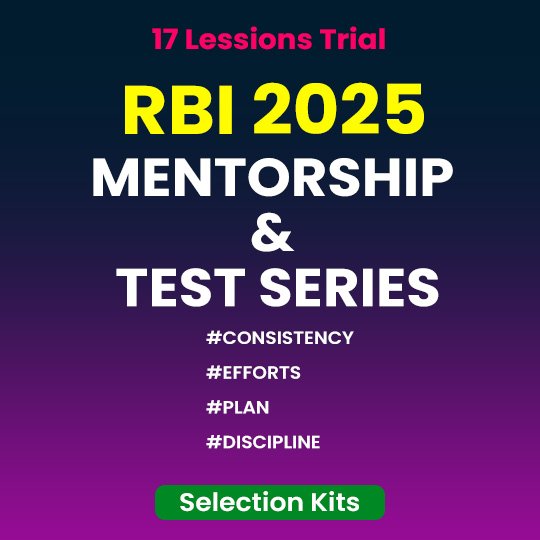
Introduction
Interest rates are the heart of any lending system, and in India, the Reserve Bank of India (RBI) plays a critical role in regulating how banks lend to customers. Over the years, the RBI has introduced various benchmarks to improve transparency and ensure that the benefits of changes in repo rates are passed on to borrowers.
One such mechanism that brought transparency, efficiency, and market responsiveness into lending was the Marginal Cost of Funds based Lending Rate (MCLR), introduced in April 2016. This blog takes you on a comprehensive journey through the origin, structure, significance, comparison, and future of MCLR.
Historical Context
India’s lending landscape has evolved significantly over the past few decades:
Evolution of Lending Rate Systems in India
| Period | System | Key Features |
|---|---|---|
| Pre-2003 | Benchmark Prime Lending Rate (BPLR) | Lack of transparency, arbitrary pricing, favor to corporates |
| 2003–2010 | Improved BPLR | Still opaque, did not ensure fair transmission of monetary policy |
| 2010–2016 | Base Rate | Cost-plus approach, better than BPLR but still sluggish transmission |
| April 2016–2019+ | MCLR | Dynamic, market-linked, transparent, monthly review of lending rates |
| Post Oct 2019 | External Benchmark System | Loans linked to repo/T-bill yield, fully market-driven, transparent |
What is MCLR?
The Marginal Cost of Funds based Lending Rate (MCLR) is the minimum internal benchmark interest rate that a bank can lend at for various tenors (overnight, 1 month, 6 months, 1 year, etc.), except in cases allowed by the RBI (e.g., certain priority sector loans, government schemes).
It represents the actual incremental cost to a bank for arranging funds, factoring in interest paid on deposits, borrowings, and other liabilities, instead of just averaging the cost of all existing funds (as done in the Base Rate system).
RBI’s Definition of MCLR:
“MCLR is the minimum lending rate below which banks are not permitted to lend, except in certain cases allowed by the RBI.”
Core Components of MCLR Explained
MCLR is a multi-variable calculation, making it a more accurate indicator of market lending costs.
| Component | Explanation |
|---|---|
| 1. Marginal Cost of Funds | Cost of new deposits and borrowings, and return on net worth (equity capital). This is the largest component (~92%). |
| 2. Negative Carry on CRR | Cost banks bear for maintaining mandatory reserves with RBI, on which no interest is earned. |
| 3. Operating Costs | Includes expenses like salaries, administrative costs, branch operations (excluding provisions for bad loans). |
| 4. Tenor Premium | Additional risk-based cost for long-term loans. A 5-year loan carries higher risk than a 6-month loan, hence higher MCLR. |
Marginal Cost of Funds
- Cost of Borrowings:
- Interest rates on recent term deposits, interbank borrowings, bonds, etc.
- Return on Net Worth:
- RBI allows a return of 8% on Tier I capital as the bank’s expected return.
- Weightage:
- 92% weightage to Marginal Cost of Borrowings
- 8% to Return on Net Worth
This ensures that banks cannot use cheap legacy deposits to underprice new loans. Instead, MCLR aligns more closely with current funding conditions.
Negative Carry on CRR
Banks are mandated to maintain 4.5% of NDTL (Net Demand and Time Liabilities) with the RBI as Cash Reserve Ratio, earning 0% interest. This is a cost to banks, and is included in MCLR.
Operating Costs
Covers all non-interest-related expenses in loan operations:
- Infrastructure
- IT & digital systems
- Salaries
- Branch costs
- Legal and compliance expenses
Notably, it excludes provisions for NPAs (Non-Performing Assets).
Tenor Premium
- Reflects the risk and uncertainty of longer-term loans.
- For instance, banks may charge a premium of 10–30 basis points for a 3-year loan compared to a 6-month loan.
Calculation Methodology of MCLR
Formula:
MCLR = Marginal Cost of Funds + Negative Carry on CRR + Operating Costs + Tenor PremiumLet’s break this down with a simplified example:
| Component | Rate (Example) |
|---|---|
| Marginal Cost of Funds | 7.25% |
| Negative Carry on CRR | 0.15% |
| Operating Costs | 0.20% |
| Tenor Premium (1 Year Loan) | 0.10% |
| Final 1-Year MCLR | 7.70% |
Each bank publishes these rates for multiple tenors like Overnight, 1M, 3M, 6M, and 1Y.
Why Did RBI Introduce MCLR?
The RBI moved from the Base Rate to MCLR to:
- Improve transparency in bank lending rates.
- Ensure faster transmission of RBI’s repo rate cuts to end borrowers.
- Reflect the actual cost of fresh funds raised by banks.
- Make the lending process responsive and fair to both consumers and businesses.
MCLR vs Base Rate
| Criteria | MCLR | Base Rate |
|---|---|---|
| Basis of calculation | Marginal cost of fresh funds | Average cost of existing funds |
| Transmission speed | Faster | Slower |
| Transparency | Higher | Moderate |
| Reset frequency | Monthly | Quarterly |
| Introduced in | April 2016 | July 2010 |
| Impact on borrowers | Quick benefit from repo cuts | Delayed benefit |
Applicability of MCLR
- All new loans (housing, personal, car, education, MSME) from April 1, 2016, were to be MCLR-linked.
- Existing loans on Base Rate could be migrated to MCLR on request, subject to terms and fees.
- Reset period:
- Most MCLR-linked loans have a 6-month or 1-year reset clause, meaning the interest rate adjusts at the end of the reset period, not immediately.
MCLR and Spread
Banks add a “spread” (markup) over MCLR based on:
- Credit risk premium (borrower’s profile, CIBIL score)
- Product premium (loan type)
- Tenor premium
Example:
If 1-year MCLR = 8% and spread = 0.50%, your interest = 8.50%
Illustrative Example of a Home Loan under MCLR
Let’s say you take a home loan of ₹50 lakhs on 1-year MCLR:
- MCLR (1 Year):
- 8.25%
- Spread:
- 0.50%
- Effective Interest Rate:
- 8.75%
- Reset Period:
- 1 year
- After 1 year, if MCLR drops to 7.75%, your new rate becomes 8.25%
Loan Types Affected by MCLR
| Loan Type | Linked to MCLR? | Current Status |
|---|---|---|
| Housing Loans | Yes (until 2019) | Now repo-linked (EBLR) |
| Personal Loans | Yes (until 2019) | Now repo-linked |
| Education Loans | Yes | Transitioning to repo-linked |
| Vehicle Loans | Yes | Transitioned |
| MSME Loans | Yes | Repo-linked since 2019 |
| Corporate Term Loans | Mostly MCLR-linked | Remain under MCLR or negotiated pricing |
| Agricultural Term Loans | Not MCLR-linked | Usually subsidized under interest subvention |
| Fixed-rate Loans | No | MCLR not applicable |
Why MCLR Still Failed in Full Policy Transmission?
Despite its improvement over Base Rate, MCLR still had limitations:
- Banks controlled internal parameters like spread and tenor premium.
- Reset periods delayed the passing of rate cuts.
- Existing customers didn’t benefit unless they switched loans.
- Conversion to MCLR from Base Rate involved fees and paperwork.
- RBI realized that external benchmarks were needed for full transparency.
Shift from MCLR to External Benchmark Lending Rate (EBLR)
In October 2019, RBI made it mandatory for all new floating rate loans in the retail and MSME sector to be linked to:
- RBI Repo Rate
- 3-month/6-month T-Bill yield
- FBIL’s published benchmark
This move ensured full and quick transmission of repo rate changes to borrowers.
MCLR continues for:
- Existing loans
- Fixed-rate products
- Corporate loans and select legacy accounts
Use Cases of MCLR in the Real World
- Home Loans:
- Most banks offered MCLR-linked home loans until 2019.
- MSME Loans:
- MCLR was extensively used in working capital and term loans.
- Educational Loans:
- Offered at MCLR + spread.
- Auto Loans:
- MCLR-based loans were standard before EBLR.
Impact of MCLR on the Indian Economy
Positive Impacts:
- Improved policy transmission
- Enhanced borrower awareness
- Competitive loan pricing
- Encouraged banks to improve cost management
Negative Impacts:
- Partial transparency (banks still manipulated spreads)
- Delayed rate changes due to reset clauses
- Borrower confusion during transitions
Visual Representation: Interest Rate Benchmark Evolution
BPLR (2003) → Base Rate (2010) → MCLR (2016) → EBLR (2019+)
↑ Less Transparent ↑ Moderate ↑ Transparent
↑ Arbitrary Pricing ↑ Fixed Margin ↑ Market-Driven
↑ Poor Transmission ↑ Delayed Reset ↑ Real-Time Rate CutsSummary
| Parameter | Details |
|---|---|
| Introduced By | RBI (April 2016) |
| Applicable To | Retail & corporate loans (now only legacy + corporate) |
| Key Feature | Reflects cost of fresh funds |
| Linked To | Internal benchmarks (not external rates like repo) |
| Current Relevance | Still applicable for older loans and certain large borrowers |
| Most Beneficial For | Borrowers with high MCLR drop and short reset period |
Conclusion
The MCLR framework was a necessary transitional reform in India’s interest rate regime. While not perfect, it laid the groundwork for the more market-friendly External Benchmark Lending Rate (EBLR).
Today, MCLR is still relevant for:
- Existing borrowers who have not switched to EBLR.
- Certain fixed-rate and specialized corporate products.
For new retail borrowers, external benchmarking is now the standard.
Bonus: Key Terms Glossary
| Term | Meaning |
|---|---|
| MCLR | Minimum internal lending rate based on marginal cost |
| CRR | Cash Reserve Ratio, part of funds banks keep with RBI |
| Tenor Premium | Higher cost added for longer-term loans |
| Reset Period | Time interval after which floating interest rates are revised |
| Spread | Bank’s markup over MCLR based on borrower/product |
| Repo Rate | RBI’s lending rate to commercial banks |
| EBLR | External Benchmark Linked Lending Rate |















